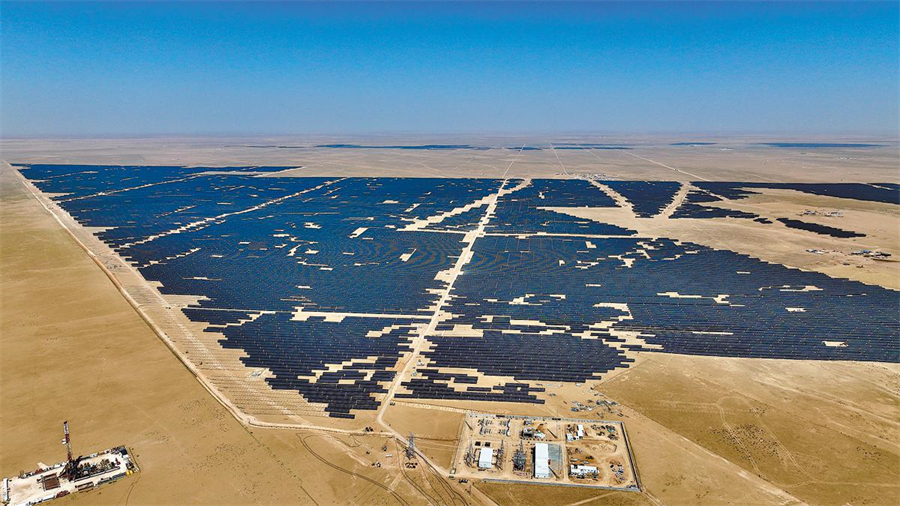Solar power project soaks up sunrays in Inner Mongolia

The Mengxi Otog Front Banner Photovoltaic Base project is located near the Mu Us Desert. [China Daily]
Most of the laborers take with them colossal flasks of water when they start work in the morning so that they can ensure their bodies stay hydrated throughout the day.
Despite being a veteran solar panel installer, Chen Zhongliang still finds it challenging to work in such arid conditions.
The consistent and rapid solar energy development in China has seen the man from Hengshui, Hebei province, travel to most provincial regions around the country to install solar panels over the past decade.
Work has been so busy that Chen can only spare time to go back to his hometown each year during the Spring Festival holiday, the most important occasion for family reunions in China, he said.
He added, however, it was the first time for him to work in Inner Mongolia. Despite having been working on the project for over half a year, he still can't get used to the local climate.
"It's too dry," he said, adding he needs to drink water frequently to prevent him from suffering dehydration and sunstroke.
Chen usually works with five others on installation. The team can install 26 solar panels on a single frame in 20 to 30 minutes.
According to GD Power Development Co, the number of solar panels to be installed in the project totals roughly 6.4 million. Meanwhile, 2.35 million steel piles have to be driven into the ground as foundations to support the frames.
Li Jinyuan, manager of the Mengxi Otog project, said the sweat-inducing efforts of workers are going to lead to substantial environmental and economic benefits.
After going into operation, it is expected to generate 5.7 billion kilowatt-hours of electricity a year, which based on the country's per capita electricity consumption last year, can meet the electricity needs of 30,000 households, he said.
It can reduce the use of standard coal by 1.71 million metric tons annually, and reduce carbon dioxide emissions by approximately 4.7 million tons, he added.
Full use will be made of the spaces underneath the solar panels after the installation work is completed, Li said, adding the area will be used for rearing sheep and growing low-lying commercial crops such as matrimony vine and alfalfa. It's hoped this will further inject economic momentum into rural vitalization in the area.
Traditionally, concrete piles with a diameter of 40 centimeters would be used to build the foundations for the solar frames. However, the company is instead using steel piles with a diameter of only 10 cm, significantly reducing the damage to the already sparse grass on the desertified land, he said.
























